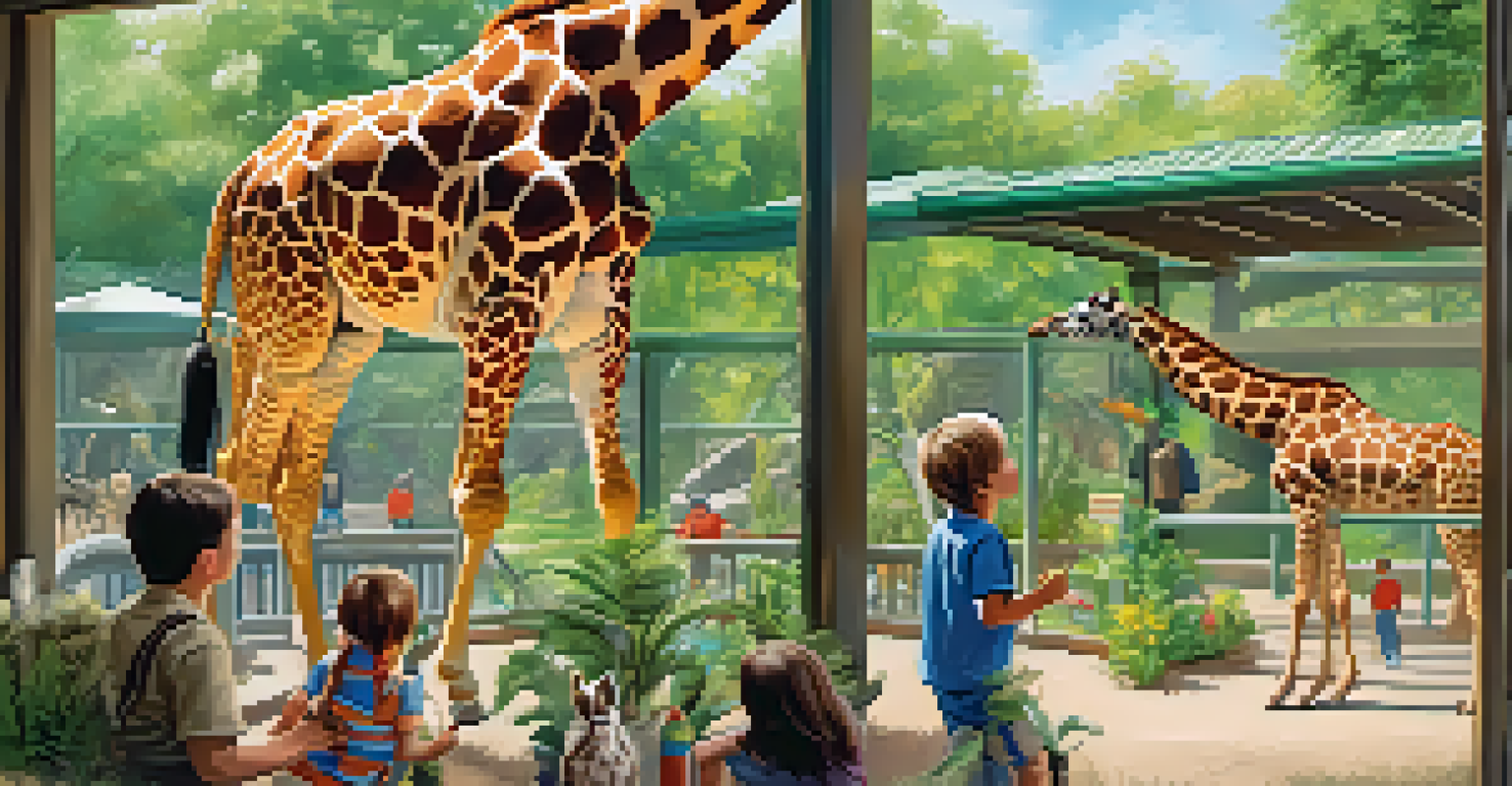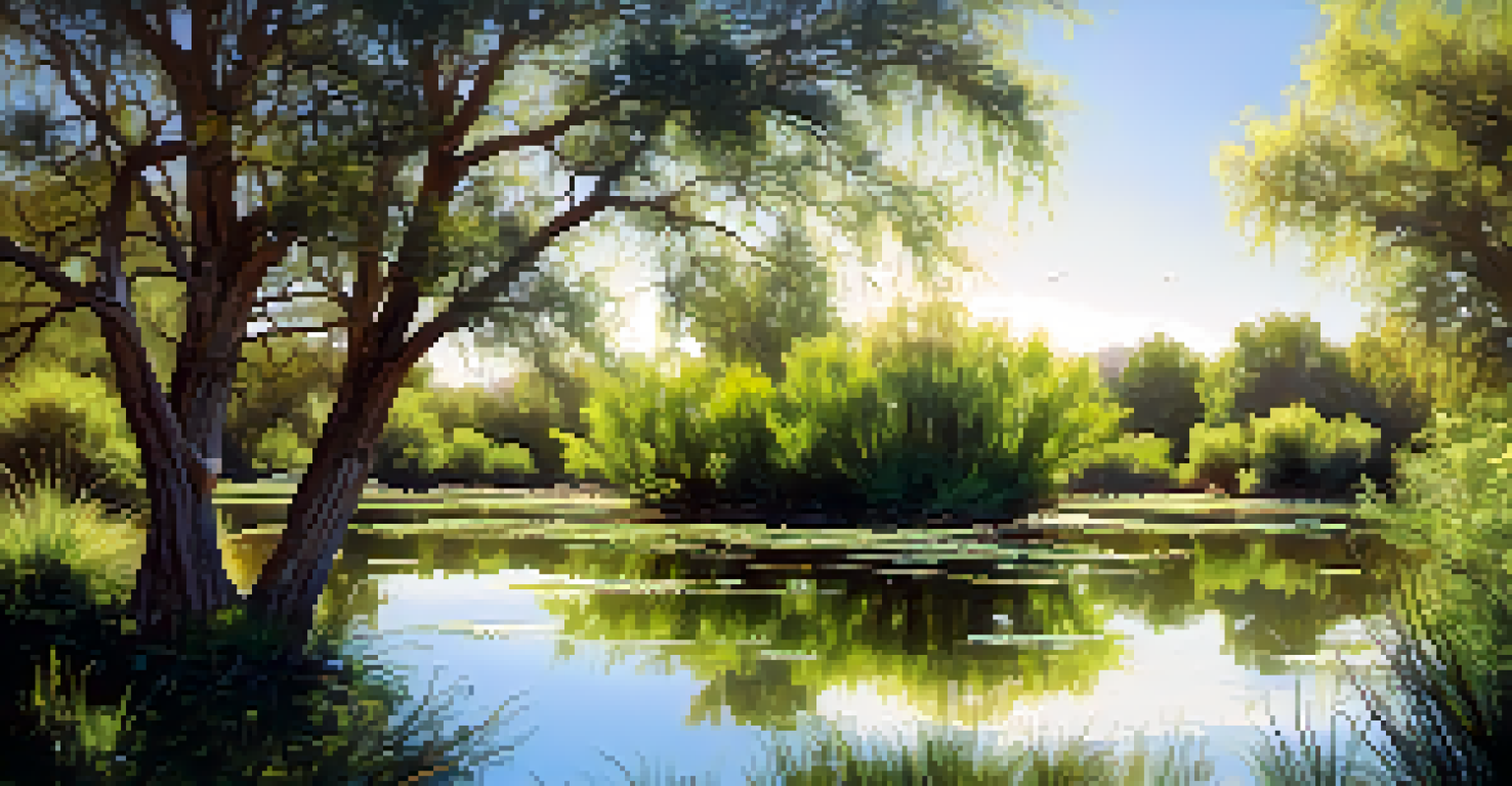A Guide to Visiting Tucson's Most Notable Wildlife Sanctuaries

Introduction to Tucson's Wildlife Sanctuaries
Tucson is a vibrant city nestled in the Sonoran Desert, home to some remarkable wildlife sanctuaries. These sanctuaries serve as safe havens for various species, offering visitors a rare glimpse into the natural world. Whether you're a local or a traveler, exploring these sanctuaries can be a rewarding experience that connects you with nature.
In every walk with nature one receives far more than he seeks.
From desert critters to majestic birds, Tucson's wildlife sanctuaries are dedicated to conservation and education. They provide a unique opportunity to learn about the region's ecosystem and the efforts to protect its inhabitants. As you embark on this journey, you'll discover the beauty and diversity that these sanctuaries hold.
In this guide, we will take you through some of the most notable wildlife sanctuaries in Tucson. Each sanctuary has its own charm and unique offerings, making them must-visit destinations for anyone who appreciates nature.
Reid Park Zoo: Family-Friendly Wildlife Encounter
Reid Park Zoo is one of Tucson's most beloved attractions, perfect for families and animal lovers alike. This compact zoo features over 500 animals from various species, providing an interactive experience for visitors. You can stroll through beautifully landscaped exhibits that mimic the animals' natural habitats.

One of the highlights of Reid Park Zoo is the opportunity to participate in animal encounters. These close-up experiences allow you to learn about the animals directly from knowledgeable staff, making the visit both educational and entertaining. Don't miss the chance to feed a giraffe or watch a sea lion show!
Explore Tucson's Wildlife Sanctuaries
Tucson offers a variety of wildlife sanctuaries that provide unique opportunities to connect with nature and learn about local ecosystems.
Reid Park Zoo also emphasizes conservation efforts, supporting various wildlife protection programs. By visiting, you're not only enjoying a fun day out but also contributing to the preservation of endangered species.
Arizona-Sonora Desert Museum: A Natural Wonder
The Arizona-Sonora Desert Museum is more than just a wildlife sanctuary; it's a fusion of a zoo, botanical garden, and natural history museum. Nestled in the stunning desert landscape, this museum showcases the unique flora and fauna of the Sonoran Desert. With over 230 animal species and 1,200 types of plants, it's a paradise for nature enthusiasts.
The Earth has music for those who listen.
Visitors can explore a variety of exhibits, including live animal displays and immersive habitats. The museum also offers guided tours and educational programs, making it an excellent destination for families and school groups. Whether you're interested in birds, reptiles, or desert plants, there's something for everyone.
Don't forget to stop by the museum's gift shop, where you can find local art and educational materials. A visit to the Arizona-Sonora Desert Museum is a chance to deepen your understanding of the desert ecosystem while enjoying breathtaking scenery.
Tucson Wildlife Center: Rehabilitation and Education
The Tucson Wildlife Center plays a crucial role in rehabilitating injured and orphaned wildlife. As a non-profit organization, it focuses on the rescue, rehabilitation, and release of native wildlife, making it an essential part of Tucson's conservation efforts. Visiting the center offers a unique opportunity to witness the behind-the-scenes work involved in animal rescue.
The center often hosts educational events and workshops, allowing visitors to learn about local wildlife and the importance of conservation. You can observe the rehabilitation process and understand what it takes to care for these animals. It's a heartfelt experience that highlights the dedication of the staff and volunteers.
Reid Park Zoo: Family Fun Awaits
Reid Park Zoo features over 500 animals and interactive experiences, making it a perfect destination for families and animal lovers.
While the Tucson Wildlife Center is not a traditional sanctuary for casual visits, they do provide guided tours during special events. Engaging with their mission can be incredibly rewarding, as you’ll gain insight into the challenges faced by local wildlife and how you can contribute.
Sweetwater Wetlands: A Birdwatcher's Paradise
Sweetwater Wetlands is a hidden gem located just a short drive from downtown Tucson. This 60-acre park features a series of ponds and wetlands, attracting a wide variety of bird species throughout the year. Birdwatchers and nature lovers flock to this sanctuary to witness the beauty of migratory birds and local wildlife in their natural habitat.
Walking trails wind through the wetlands, offering visitors a chance to explore the diverse ecosystems. Keep your eyes peeled for herons, ducks, and even the occasional coyote. It's a peaceful escape from the bustling city, where you can enjoy a leisurely stroll while soaking in the sights and sounds of nature.
In addition to birdwatching, Sweetwater Wetlands hosts educational programs and guided tours. These opportunities allow you to learn about the importance of wetland conservation and the unique species that depend on this fragile ecosystem.
Saguaro National Park: Iconic Desert Wildlife
Saguaro National Park is a must-visit for anyone interested in the unique wildlife of the Sonoran Desert. This sprawling national park is home to the iconic saguaro cactus, as well as a diverse range of wildlife including desert tortoises, bobcats, and over 300 species of birds. The stunning desert landscapes provide a breathtaking backdrop for any outdoor adventure.
Visitors can explore numerous hiking trails that range from easy walks to challenging treks. Each trail offers a different perspective of the park's diverse ecosystems, allowing you to encounter various wildlife along the way. The experience of walking among towering saguaros is truly unforgettable.
Birdwatching at Sweetwater Wetlands
Sweetwater Wetlands is a birdwatcher's paradise, attracting diverse species in a serene environment ideal for nature enthusiasts.
The park also offers ranger-led programs, where you can learn about the desert's unique flora and fauna. These educational experiences deepen your appreciation for the natural world and the importance of preserving it for future generations.
Tucson Audubon Society: Advocating for Birds
The Tucson Audubon Society is dedicated to the conservation of birds and their habitats in Southern Arizona. They offer a range of programs and initiatives aimed at protecting local bird populations. For bird enthusiasts, getting involved with the Tucson Audubon Society can be a meaningful way to contribute to wildlife conservation.
The society organizes regular bird walks, allowing participants to explore various habitats while learning about the diverse species that call Tucson home. These guided tours are perfect for both seasoned birdwatchers and beginners eager to learn. You'll not only see beautiful birds but also connect with a community of like-minded nature lovers.

In addition to bird walks, the Tucson Audubon Society hosts educational events and workshops throughout the year. These programs provide valuable insights into bird conservation efforts and the challenges faced by avian species in the region.
Plan Your Visit: Tips for Wildlife Sanctuary Explorations
Planning your visit to Tucson's wildlife sanctuaries can enhance your experience and ensure you make the most of your time. Start by checking the operating hours and any special events happening during your visit. Many sanctuaries offer guided tours, which can provide valuable insights into the wildlife and conservation efforts.
Consider the best time of year to visit, as wildlife activity can vary with the seasons. Early mornings or late afternoons are often the best times to see animals in their natural behaviors. Don’t forget to bring binoculars for birdwatching and a camera to capture the incredible sights.
Lastly, remember to stay respectful of the wildlife and their habitats. Follow the guidelines provided by each sanctuary, and leave no trace behind. This way, you’ll not only enjoy an unforgettable experience but also contribute to the preservation of these beautiful places.